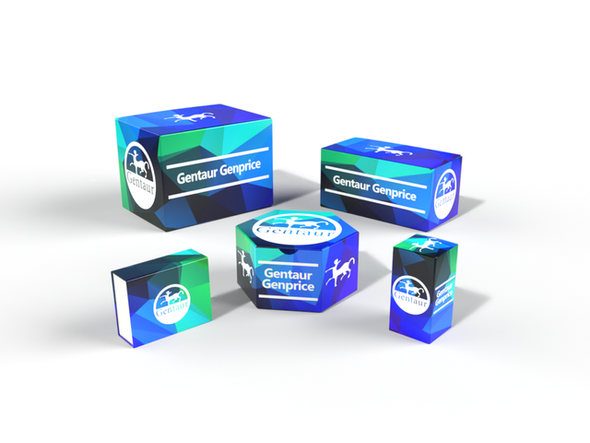Description
Goat Anti-Human CANX IgG Polyclonal AntibodyAB0037
Overview: Goat polyclonal to CANX (Calnexin) - endoplasmic reticulum (ER) membrane marker. CANX is a member of the Calnexin family of molecular chaperones. This protein is a calcium-binding, ER-associated protein that interacts transiently with newly synthesized N-linked glycoproteins, facilitating protein folding and assembly. It may also play a central role in the quality control of protein folding by retaining incorrectly folded protein subunits within the ER for degradation.
Other Names: Calnexin, CALX, CNX, FLJ26570, histocompatibility complex class I antigen binding protein p88, IP90, major histocompatibility complex class I antigen-binding protein p88, MS952, P90 antibody.
Other Names: Calnexin, CALX, CNX, FLJ26570, histocompatibility complex class I antigen binding protein p88, IP90, major histocompatibility complex class I antigen-binding protein p88, MS952, P90 antibody.
Concentration: 2 mg/ml
Antibody Type: Primary
Target Type: Anti-CANX
Accession Number: ENSG00000127022
Host Species: Goat
Immunogen Species: Human
Immunogen Type: Recombinant protein
Immunogen: Purified recombinant peptide within residues 550 aa to the C-terminus of human CANX produced in E. coli.
Isotype: IgG
Clonality: Polyclonal
Confirmed Reactive Species: Human, mouse, rat, bovine, canine, chicken/avian, donkey, feline, goat, guinea pig, hamster, horse, porcine, rabbit, sheep, simian, other
Specificity Detail: Detects a band of 90 kDa by Western blot in the following human (293A, primary fibroblasts, HaCat, HeLa, HMEC-1, Jurkat, MNT1, U-118, rat (TR-iBRB), mouse (3T3, AtT-20, Hepa, Raw264.7), monkey (COS-7) and canine (D17) whole cell lysates.
Buffer: PBS, 20% glycerol and 0.05% sodium azide
Purification: Epitope affinity purified
Conjugation: Unconjugated
Format: N/A
Application: WB, IF, IHC-P, IHC-F
Concentration/Dilution: WB:1:500-1:5,000, IF:1:50-1:500, IHC-P:1:200-1:1,000, IHC-F:1:200-1:1,000
Storage:
References: 1. Monteiro-Alfredo T, Matafome P, Iacia BP, et al. Oxid Med Cell Longev 2020 Mar. PMID: 32256951, 2. Fricke S, Metzdorf K, Ohm M, et al. Cell Rep 2019 Oct. PMID:31618635, 3. Neves C, Rodrigues T, Sereno J, et al. Oxid Med Cell Longev 2019 Jun. PMID:31341532, 4. Fonseca LMO, MSc Thesis, University of Coimbra, Portugal 2018, 5. Silva MM, Gomes-Alves P, Rosa S, et al. J Biotechnol 2018 Aug. PMID:30165116, 6. Rodrigues TDA, PhD Thesis, University of Coimbra, Portugal 2018, 7. Ribeiro M, Castelhano J, Petrella LI, et al. J Magn Reson Imaging 2018 Jan. PMID:29377412, 8. Awadh A, PhD Thesis, University of Alberta, Canada 2018, 9. Ribeiro STF, PhD Thesis University of Lisbon, Portugal 2017, 10. Rodrigues T, Matafome P, Sereno J, et al. Sci Rep 2017 May. PMID:28490763, 11. Cabral AMD, MSc Thesis, University of Lisbon 2017, 12. Thieleke-Matos C, Lopes da Silva M, Cabrita-Santos L et al. Cellular Microbiology 2016 Mar. PMID: 26399761, 13. Sivadasan R , PhD Thesis, Wurzburg University 2016, 14. Neves CAF, MSc Thesis University of Aveiro, Portugal 2015










